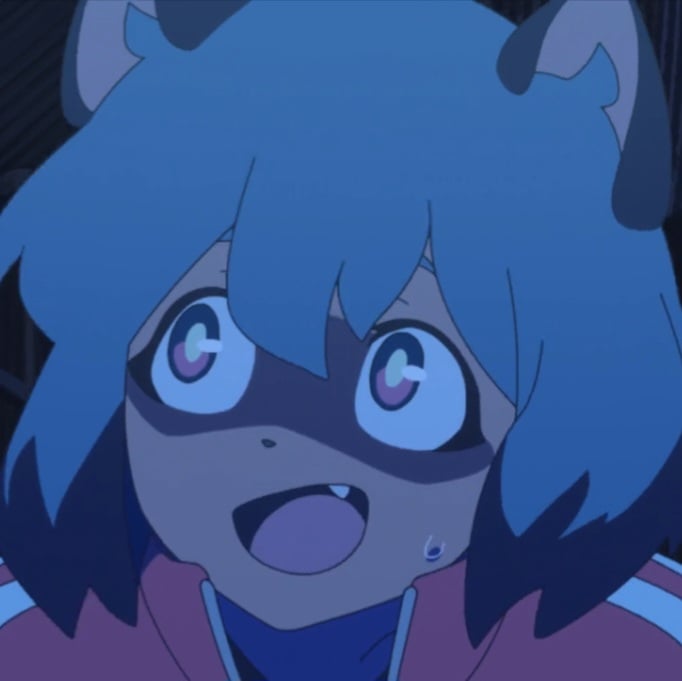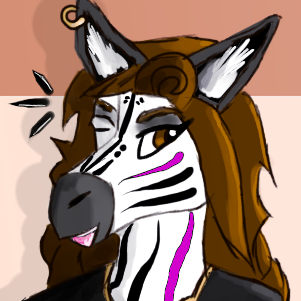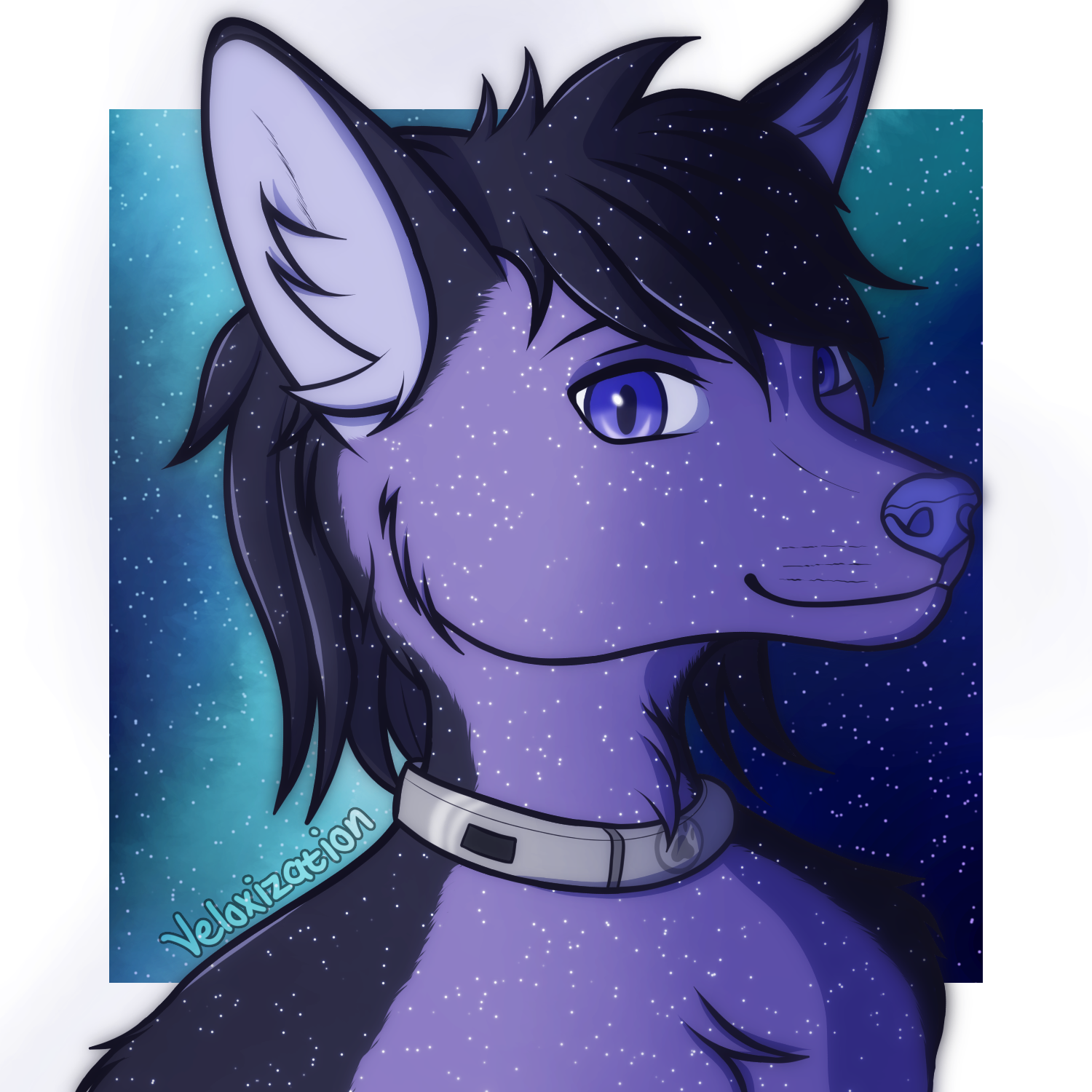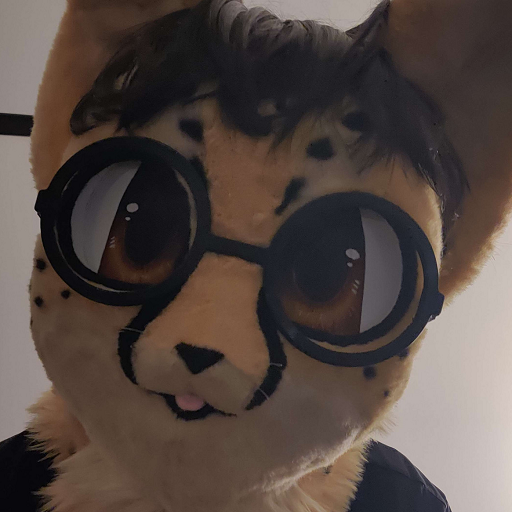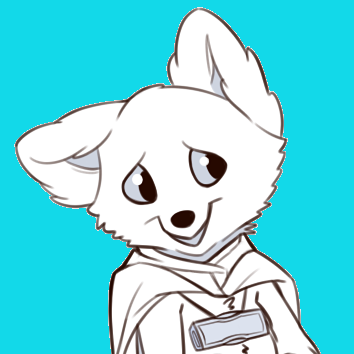This is a follow-up of my previous post.
I’ve also had a few more question about tail furgonomics. Where would the tail go when sleeping or sitting?
I suppose chairs could be built with holes in them for tails to go through, but that would bring a problem especially for animals with larger and thicker tail. When sitting on a bus, for example, animals with larger tail might have their tail be in the way of someone behind them. Or if a chair were located close to a wall, there might not be enough space for larger tails to go through.
And when sleeping, would animals with thicker tail struggle to lay in their bed? Since their tail would get in their way, would they be forced to lay on their side? Would sleeping in a position where your tail is crushed under your body painful?
And what other problems would having a tail bring? It seemed like having a tail as an anthro animal could be a hassle.
But let’s be honest, we view everything about anthro worldbuilding within the lens of a human, because obviously. But an actual anthro society would probably have figured out how to deal and manage with their tail problems the same way we did with our human problems. Their society might not even look like ours, so many problems they would’ve faced in our human society, whether caused by their tail or not, wouldn’t apply. They would probably design their society around the fact that they have tails.
Though a bit of a struggle, we can find products for humans of all shapes and sizes. Shirts, pants, clothings are available of all sizes, even if some sizes are harder to find; left handed scissors exist; and more. So it would be possible for anthros to deal with the hassle of tails. But, it would still be a struggle, just like how much it is a struggle for us to buy shirts with unusual sizing.
But the last two paragraph might not always apply. I am interested in writing a story about a child who suddenly turned into an anthro while others still remain human, so they didn’t have the luxury of anthro-animal-centric societies catering them. Since they were the only anthro, they would have trouble fitting in many ways due to their different, furry body. They had to figure out how to deal with their tail, fur, etc in a society not built for anthro.
With that I wondered, what other struggles would they have? What could potentially be a source of struggle or conflict for an anthro in a society of humans-- aside from discrimination, which would be the main focus of my story. And for more fun, what other adaptations or differences would a society of anthros have over human ones?
A number of interesting questions here.
For sitting in chairs, I guess the easy solution is that the only chairs in the anthro world would be stools or some variant thereof. There’d be no back and perhaps a small grove on the rear of the seat to accomodate thicker tails.
Chairs like this https://www.trampsuk.co.uk/wp-content/uploads/2021/09/unnamed-51.jpg , with a very open back, could also be useful and maybe even adapted to a mastermind/gamer style chair (although I wonder about structural integrity).
I do wonder if richer anthros would buy or commission custom designed chairs to match their species. Or poorer marginalised species would have real trouble because everything is designed for other species.
For sleeping, I don’t think sleeping on their back would be a big issue, honestly. I’m not a biologist, but as far as I know the tail is an extension of the spine? So it’d just lay out flat on the bed between their legs. I imagine if they did twist and turn and end up sleeping on top of it, it’d probably be like how humans can sometimes sleep weird and get pins and needles in their arms as they wake up.
For transport, such as buses, trains and even cars I wonder if the tail can go below the seat? Wouldn’t work for all species, but in theory the seat could have a hole for them to fit their tail through, and curl it up in a small pocket under the cushion.
There is a lot of stuff that can happen to a tail, it can get trapped in doors, bumped by passers by, stood on and so on. I expect in an anthro world, in crowded areas they would anticipate and prepare for an amount of jostling. In a non-anthro world though… Getting my tail stuck in a closing train door does not sound like a fun time.
I expect a human-turned-anthro (and maybe anthros with anxiety) would end up either clutching their tail tight to their side or leg (depending on the type of tail), just so it can’t get caught in things.
For another conflict unrelated to tails, what about keeping fur clean? I imagine in the anthro world this is a huge industry with lots of research into how to dry fur as quickly as possible, how to avoid getting drains clogged, perhaps species specific shampoos. I remember seeing a concept of a large “gateway” with many heated fans connected to it for the anthro to stand inside and get dried, like a giant hairdryer.
Wheras for the human-turned-anthro, you have a hairdryer, some dog shampoo and prayer that you don’t end up smelling like wet dog.
For another conflict unrelated to tails, what about keeping fur clean? I imagine in the anthro world this is a huge industry with lots of research into how to dry fur as quickly as possible, how to avoid getting drains clogged, perhaps species specific shampoos
In the world I’ve built, there aren’t showers and bathtubs, only saunas. Partially because Plumbing Is Hard in this time period but also because a sauna is essentially a room-sized shower that can accommodate any size, and there’s no drainage to worry about, just sweep fur out the door with a broom. The techniques IRL animals use to keep themselves dry still apply in this world, too – for instance, a dog person shaking themselves dry is still effective, it gets you halfway there.
For sitting in chairs, I guess the easy solution is that the only chairs in the anthro world would be stools or some variant thereof. There’d be no back and perhaps a small grove on the rear of the seat to accomodate thicker tails.
I also think of that, too. But one concern would be how large the hole should be. Too small, and anthros with larger tails wouldn’t be able to fit their tail in. As you say, marginalized species would likely struggle with this.
But this problem is even worse for an anthro in a non-anthro/human society like the one in my story. In a human society, most chairs wasn’t designed with tails in mind. Finding a seat with back holes to sit on would be difficult, so in most cases, the anthro would have to sit with their tail crushed by their back. Even sitting in a car would be difficult as there would be nowhere for the tail to go.
I suppose they could sit a bit forward so there would be some gap for their tail. This might not work for anthros with heavier tails or ones that couldn’t bend upwards, in which case they might be able to bend their tail sideways or sit facing sideways. Unfortunately, they won’t lean their back to the chair since there needed to be a gap between their body and the chair for the tail. And for the heavier tails, sitting sideways wouldn’t work with chairs that had armrests and even then it would take more spot on a bench, which could be annoying.
For sleeping, I don’t think sleeping on their back would be a big issue, honestly. I’m not a biologist, but as far as I know the tail is an extension of the spine? So it’d just lay out flat on the bed between their legs. I imagine if they did twist and turn and end up sleeping on top of it, it’d probably be like how humans can sometimes sleep weird and get pins and needles in their arms as they wake up.
I’ve looked at images of animals sleeping on their back and yup, their tail just lay out between their legs just like in this image.
For transport, such as buses, trains and even cars I wonder if the tail can go below the seat? Wouldn’t work for all species, but in theory the seat could have a hole for them to fit their tail through, and curl it up in a small pocket under the cushion.
That could work, but there could probably be some bias or discrimination arising. As some species’ tail were better hidden or tucked away than others, species whose tail were hard to fit or took up more space might be considered “worse”. Like how some people don’t like to sit next to fat people since they take up more space, some anthros might not like to sit behind species whose tail took up more room in the back.
Some anthros might also be more hyperactive than others, which could be a problem when they were on a train and they wagged their tail in front of the people on their back. Imagine how annoying it’d be if the anthro dog sitting in front of you wagged their tail and their furry tail hit your face multiple times.
There would probably be etiquettes surrounding tails, kind of like our etiquettes around when to use our left or right hands. I might delve deeper into it on another Lemmy thread. I have quite a lot to say for a message reply.
In a non-anthro world though… Getting my tail stuck in a closing train door does not sound like a fun time.
There would indeed be a lot of moments where tail, fur, snout, etc became a liability in a world not built around them.
Having you said that in 1st person, though, made me wish I actually had a tail in real life… As much as it’d be a hassle, I’d still love to have one…
I expect a human-turned-anthro (and maybe anthros with anxiety) would end up either clutching their tail tight to their side or leg (depending on the type of tail), just so it can’t get caught in things.
This would be difficult for anthros with thicker and less flexible tail, in which case they might just have to deal with their tail.
For another conflict unrelated to tails, what about keeping fur clean? I imagine in the anthro world this is a huge industry with lots of research into how to dry fur as quickly as possible, how to avoid getting drains clogged, perhaps species specific shampoos. I remember seeing a concept of a large “gateway” with many heated fans connected to it for the anthro to stand inside and get dried, like a giant hairdryer.
That seemed interesting. And there would certainly be more weird adaptation present in an anthro society. Species specific teeth cleaning product, for example, as different animals have different teeth structure. A carnivore’s teeth would be different from a herbivore’s. Horns would also have to be managed, so hygiene or care products related to that would be developed.
So far we had been talking about furry species, which was fair, but how about scaly anthros like lizards or amphibians like frogs. Their hygiene needs would be different to animals with fur. Some anthro species might also have other very specific adaptation or hygiene routine, maybe involving extra body parts or body shapes, such as the question of how an anthro hedgehog would clean its spiky body.
Again, there are more things I wanted to talk about, maybe on a separate post in the future.
Wheras for the human-turned-anthro, you have a hairdryer, some dog shampoo and prayer that you don’t end up smelling like wet dog.
That wouldn’t seem very fun, would it? Seemed like a hassle given the amount of fur they’d have to clean everyday, all while praying that they didn’t end up smelling worse like a wet dog.
Also, this reply is much longer than I thought. If I continue writing about anthro worldbuilding here, I could’ve ended up writing Lord of the Rings worth of anthro worldbuilding.
Damn, you pretty much beat me to everything haha
Yeah, I think being able to tuck your tail underneath a seat with some special hole would work great!
Depends a lot on how far you want to go with playing up the source animals differences.
In the transformation scenario, a dog character would suddenly find themselves seeing less colors, which could be played for a change in outlook where they stop relying on sight so much, and pick up the slack with smell. It could also have interaction-with-society effects: signs written/drawn with certain color combos would become unreadable, some computer games would become harder, if not impossible, to play, plus others (talking with a person with daltonism could probably give you more information here). Does your character now have the ability to see in the dark? This could change their habits and circadian clock drastically, and inform a lot of their behavior (suddenly it’s a lot easier to be a night thief, or be a security guard, or a valuable asset in mining operations).
If smells change, so do food tastes, so the character would have to re-evaluate every food preference. Every single person (both others and self) would gain a new smell dimension. Suddenly a great friend’s presence may become unbearable. Is the character’s room close to an outside trash can? Suddenly even just a day’s trash might be uncomfortable. The same applies for any in-house trash, such as in the kitchen. I’m unsure of this, but there might be smell components to certain emotional aspects? Can “smelling” fear become more than a metaphor? And going farther than just smells, dogs can be trained to detect panic attacks and other issues, could a dog character train themselves to replicate that?
Is the character digitigrade or plantigrade? Suddenly they might have no shoes to wear, and pants need completely different fits, even without considering the tail. Will they be able to even walk immediately, or will they struggle to keep equilibrium with tail and/or legs? The clothes’ fit might be relevant with fur alone, if the character ends up having a long or thick coat, rather than a short one.
And hearing, of course. Do they hear worse? Better? Human hearing is not particularly good so probably better? Are electronics now unbearable due to their buzzing? Do people talk too loud? Is working in an office absolutely agonizing? Do they plug their ears to handle the new stress? The unique thing about these changes is that they are really hard to relate to, even more so than eyesight problems, because it comes from being better at something than any human possibly could, and it creating problems. This means that not even in disabled communities would your character be able to find someone who understands. It’s the kind of thing that almost begs to introduce a plot thread of alienation from peers (even more so than just being an anthro in a human world).
Do they have claws? They’re more of a weapon now, even if the character themselves does not think of them that way, other people would. Do they have a different weight and/or height? They might tire more easily now, or hit their head (if growing) or not be able to reach things they could (if shrinking). Are they a deer or other animal with horns? That’s a weapon and different weight feel (they would probably flail with their head when nodding the first times). Do the horns fall and regrow every year? That’s something they could sell for some cash maybe? Or maybe it weirds the character out.
Temperature control would be a whole other thing. Humans wear clothes in place of having fur coats, but now your character has a fur coat. What do? Are clothes more of a social thing now? To make them look less alien to others? Do they relish the opportunity to be naked while alone at home? A fur coat would also protect them from the sun and other weather effects, but forget any kind of long term exertion unless you magic some cooling system, panting and wet noses are not sufficient for prolonged running (unless you hand-wave it away or never introduce it as a complication).
And this is only from the point of view of a single character. If everyone is anthro (and has always been), then there are a lot of societal-level differences.
There’s a lot to fur coats, for example. Maintenance would be a lot harder for everyone, overall. Some species have short coats, other long coats, other double coats, and possibly much more (a species having no coat could be an ostracizing factor, for example: sphinx cats could be frowned upon). In double coat species baths could be just a surface wash, while deeper sessions might be relegated to grooming parlors of some sort, which would also handle problems with mating and other fur coat health concerns (it is a surprisingly deep topic. I plan to play around with it on something I’m writing). House plumbing would require some extra filters to catch fur, but this is not limited to water plumbing but also to air plumbing, as in, air conditioning and any other air cycling units would need to deal with shed fur and dandruff. Clothing styles would also be a lot different, cotton is great at grabbing shed fur, so I expect it would be favored a lot less in comparison with other fabrics, or it could be worn as a sign of luxury (as in, only people who have other people to handle their needs such as cloth washing would go through the effort of wearing them, as a display of economic power).
Claws, hooves, horns, and all other “externals” can be used as weapons, how does your society deal with that? Enforced culling? Only criminals have them as a display of power and not belonging in “normal” society, while “normal people” are all expected to neutralize theirs? Would things as de-clawing being treated as a normal thing that everyone is expected to do, or would it be considered mutilation, and inhumane?
What about “internal” weapons? Poisons and venoms? Would those people be looked down upon with inherent suspicion? Maybe they would be sterilized at birth? Could they have been “naturally” selected against, such that toxic traits disappear from the species entirely? Are there prey/predator dynamics?
I feel the that for a mixed species society something would have to be changed at some root level in the past (either species culling, massed sterilization, selective breeding, or others) that could either lead to deep rooted distrust or animosity between species (Beastars works in this zone, although I personally don’t think the equilibrium the manga starts with is something that could have occurred naturally), or have been totally accepted and be considered normal.
Or you could go with geographically enclosed species, no mixing whatsoever. Each species would have wildly different societal norms and expectations, with trade and collaboration being either a tense or unusual affair. Amphibian species could require very humid environments, and travel to other societies would need to be reliant on technology (for example, water misters that they could use on themselves to re-hydrate). Mammals could have a stronghold on non-equatorial latitudes, while equatorial ones would be dominated more by reptiles. This could work well in a black-and-white-morality setting, whereas for a morally-grey setting you could add species mixing in the in-between latitudes, and even some notable exceptions for added dynamics, such as camels in deserts.
Even with mixed species societies you can have a lot of this, even if you assume that the natural weapons are a thing in play. There’s no strict need for state regulations: you can handle the situation on a social level. Sure, some species have dangerous natural weapons, but their use in harming others can very well be something that is totally unheard of, or you can just ignore it all together, and only play them for flavor, or for less violent drama (for example: daltonic species ending up congregating together, because the way they paint their houses is unsightly to more colorful folks; noise-sensitive species doing the same because they build everything farther apart, or with more noise reduction techniques that other species find eerily mute; places that are totally mixed and there are no facilities to help with these differences, but were the people do the extra work of being aware and respect each other differences.)
And this is just touching the surface. Are you including avians? Do they fly? In a more reality-based setting that’s a hard sell, but in hand-waved or magic settings there’s a lot you would have to think with them.
For a less complex setting you could go mono-species, and just deal with the particulars of on single species. This is would be perfect for going deep instead of wide, but at this point I’m rambling more than thinking, so I guess this is a good place to stop. Either way, as you can see there is a lot to think about, it just depends on how deep and wide you want to go with it.
In the Beastars manga, We see that the Komodo dragons are feared and hated for their venom. They are segregated by going to eat at separate restaurants and all that. It kinda allows for the world to feel more real, by adding a touch of discrimination like in the real world. Just like in real life, most people couldn’t care about the differences. But that doesn’t mean that there aren’t plenty of people who don’t accept others as people and look down upon them.
TLDR: Adding some racism and discrimination to your story seems to give your world a more real and dark touch. Someone I’ve personally loved.
I do plan to incorporate inter-species discrimination into my story-- in fact, it’s the main plot of the story.
But for many of the things mentioned in this thread-- yeah I’m not gonna go that deep. I’ll just incorporate what I feel necessary and that’s it, most people will hand-wave the more minor detail anyway.
Headwear of any sort is one that often gets glanced over, especially any sort of protective helmet or hardhat.
Also, footwear might be an issue depending on foot and leg structure. Human shoes are designed for plantigrade feet. An anthro with digitigrade won’t be able to wear shoes made for humans, not just due to size but due to significant differences in shape. And it’s not always good to go barefoot even with paw beans, particularly on hard, thermally conductive surfaces like asphalt or concrete.
You also can’t forget the snoot. Snouts would make it hard to wear any sort of full-face covering. This combined with ear position would require a completely different mask design should they need to wear one.
Honestly, in general, the more animal-like the anthro, the more complex things get. A relatively human-like anthro like Rio Lepidoptera wouldn’t have nearly as many issues fitting into human society as a more traditional “petting zoo people” style anthro. And on the flipside, a taur, naga or “meroid” (for lack of a better term for a merfolk-like body plan) would have significantly more issues due to their non-humanoid body plan.
You also can’t forget the snoot.
Try not to look up while in the shower, because your nostrils might be pointed forwards now.
Yup, that’s another thing, although it depends on the species. A gator anthro would just be able to close their nostrils and not care.
